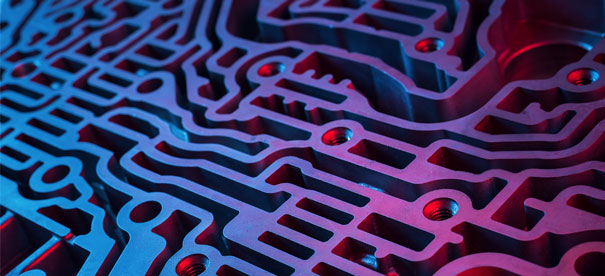Everything in the right place
Safety and control in the production process: examples of presence verification and completeness checks
Presence verification in the form of a visual inspection by an employee has long been a thing of the past. The error-prone inspection process has been replaced by modern image processing solutions that are integrated into the ongoing production process. This enables faster transmission and processing rates and, as a result, reliable presence checks directly on the production line. In addition to increased work efficiency, another positive aspect is the significant reduction in labor costs.

Presence Verification during gearbox manufacturing
In the case of a slide plate of a transmission, the presence of the balls and valves is checked. 4 cameras detect the test result directly, indirectly and under UV light with switchable lighting.
Presence Verification of Ball Bearings
10 different types of ball bearings have different diameters and ball types (steel or ceramic). Using a camera with zoom module (close-up lens), images of the spheres are taken and found, counted and evaluated by NeuroCheck Template Matching. A homogeneous lighting avoids disturbing reflections on the balls. In addition, a backlight is used to judge the balls of steel or ceramic on the gray scale evaluation.


Type Recognition of Brake Discs
Brake discs are available in numerous types, the dimensions of which vary. The task is to identify different brake disc types based on the presence of various features. From two camera perspectives (top and side view), the parallel image acquisition takes place. On the basis of features such as bore holes, pot slope, pot height, etc., ranges of values per characteristic are defined. For each characteristic a subclassification takes place. By linking the subclasses, the brake disc type can be uniquely determined and checked.
Image Header © NeuroCheck
Image Gear Unit © designed by tarasov_vl – Fotolia
Image Ball Bearings © designed by christian42 – AdobeStock
Image Brake Discs © designed by gourmecana – AdobeStock
Image Contact © designed by Pressfoto – Freepik.com